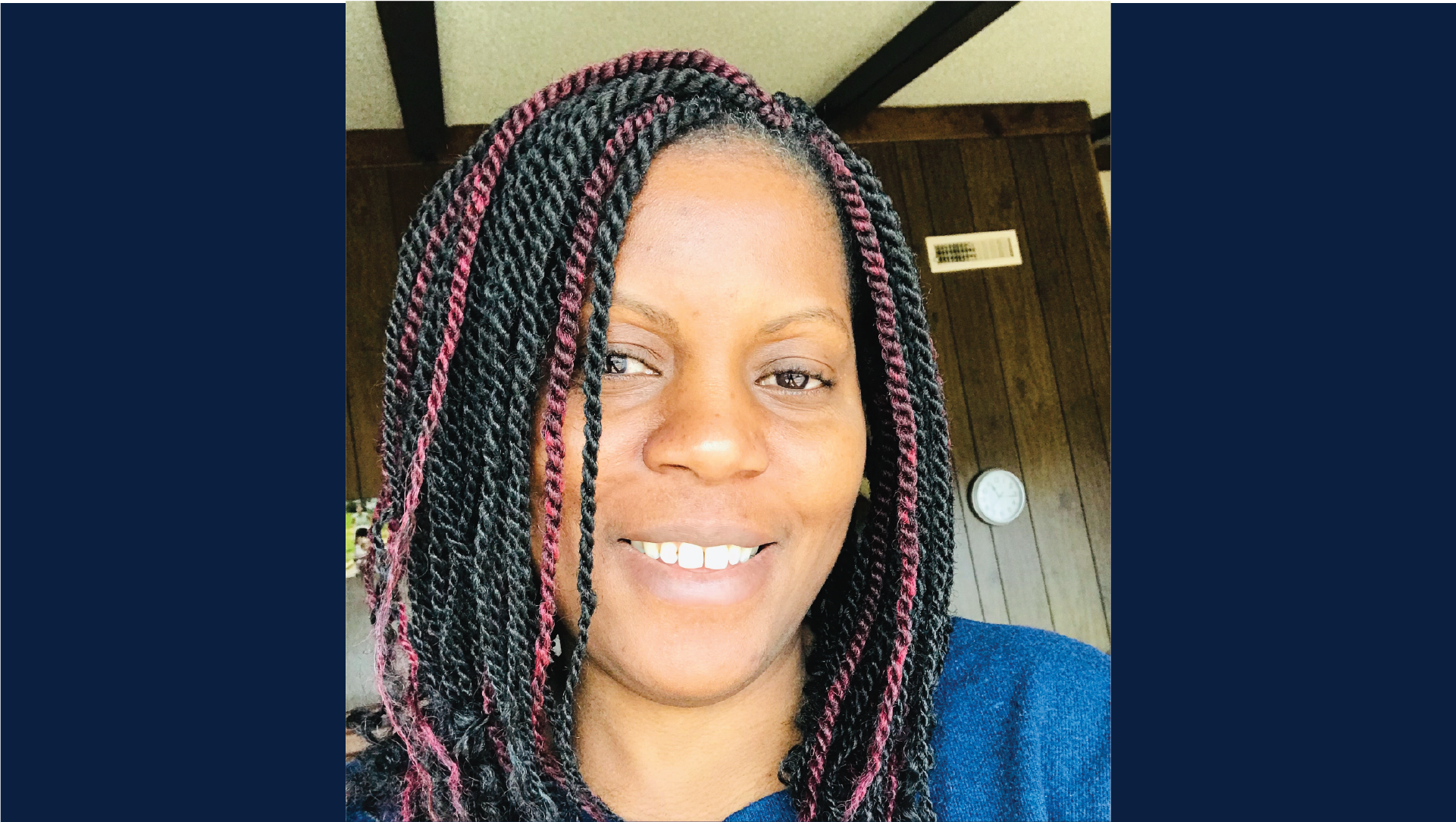21st Century Postdoctoral Fellow to Conduct Cutting Edge Research Across Labs
Louise Djapgne, a new 21st Century Postdoctoral Fellow for the Department of Chemistry, brings her skills as a molecular biologist to the field of biophysics at Georgetown in order to advance research around the membrane transporter lacY permease.
“Being able to apply my expertise while learning new skills is beyond exciting,” Djapgne says. “Though I am still conducting initial investigations, I am looking forward to the outcomes of this project.”
A Passion for Scientific Service
Djapgne’s career has been shaped by a desire to help others. While living in Cameroon, she earned a B.A. in law from the University of Douala with the hopes of specializing in family law, but ultimately chose to pursue a career in scientific research.
After immigrating to the United States, Djapgne earned a B.S. in biochemistry and molecular biology from the University of Maryland Baltimore County (UMBC) before completing a Ph.D. in pharmaceutical sciences from the University of Maryland Baltimore (UMB).
“The motivation to help people and the inclination to contribute to science in any way possible guided my choice and decision to study biochemistry and molecular biology and to pursue graduate studies,” Djapgne says. “I am driven by the same sentiment today as a postdoctoral fellow at Georgetown University – I want to play a part in the advancement of scientific discoveries pertaining to human health, no matter how small.”
Research for Others
The joint 21st-century postdoctoral fellow began her research with YuYe Tong and Rodrigo Maillard in the fall of this year. She works in both labs to characterize the properties of the lactose permease (lacY) protein using scanning electrochemical microscopy (SECM) and single-molecule optical tweezers.
Djapgne explains that this research might help advance biomedical research in the study of molecular activity of some human diseases caused by defects in major facilitator superfamily (MFS) transporter proteins, a group to which lacY belongs.
“Optical tweezers are actively used to understand fundamental biological processes that govern cell division, differentiation, tissue repair and health maintenance,” she says. “In my project at Georgetown, we hope to combine optical tweezers and SECM to better understand the activity of lacY permease at the single-molecule level. This is important because lacY transports small molecules and nutrients across cell membranes in many different types of cells and belongs to a family of proteins that play important roles in human diseases.”
This interdisciplinary collaborative 21st-century post-doctoral research project between the two labs in biophysics and electrochemistry aims to pioneer new research opportunities made possible by integrating organically two powerful but very different experimental methods. Maillard and Tong describe the research as being high risk, high reward.
“We hope that this unique interdisciplinary approach will enable us to unravel the still elusive molecular-level mechanistic processes of ubiquitous cross-membrane transport of small molecules,” they say. “We are very excited that Djapgne can join this effort as we believe that she has the right skill sets and mental toughness to be an effective linchpin in helping bring the challenging research project to fruition.”
Due to her time spent in the DC metro area completing her undergraduate and graduate degrees, Djapgne considers Washington home. She was excited to return to the city after completing her first postdoctoral position at the University of Iowa in June 2020 and knows that the diverse environment at Georgetown will be beneficial in her career as a researcher.
After finishing her postdoctoral fellowship, Djapgne hopes to run an independent lab or work as a research scientist in an academic setting.
